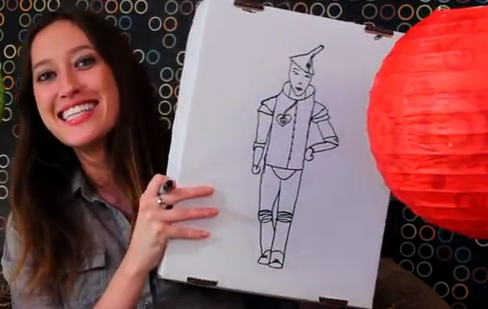Submitted by New Media Rights last modified Thu, 09/11/2014 - 2:20pm
What is 3D printing?
Before we get too far into the law surrounding 3D printing, it’s helpful to know what 3D printing actually is. In many ways, a 3D printer is just like the printer you have at home: it uses a computer file as a blueprint; it uses ink; and it prints in layers to build up a final product. However, unlike your printer at home, it can print three-dimensional objects and use a wide variety of substances and materials for “ink.” What sets 3D printing apart from regular manufacturing is that 3D printing uses a layering process to create the object, as opposed to filing down a block of material.
Admittedly, this is a very cursory introduction to how 3D printing works. For some online sources explaining the mechanics of 3D printing, check out “How 3-D Printing Works” and “How 3D Printers Work”. If you’re in the San Diego area and are really interested in some hands-on time with a 3D printer, check out FABLAB San Diego for opportunities to learn about 3D printing by doing.
How are 3D-printable files created?
Before we talk about who owns a 3D-printable file, it’s helpful to know how exactly 3D printed files are created. Currently, there are two ways to create a 3D-printable file. One way is to use a 3D scanner, and scan an existing object to create a 3D-printable file, much like you would with a 2D scanner. Another way is to create a 3D-printable file on the computer, creating a Computer-Aided Design file (“CAD”). CAD files are 3D drawings typically used as a ‘blueprint’ by architects, engineers, and designers. Currently there are two popular formats for 3D-printable files: CAD and STL. CAD files are easily created, read, and edited by 3D drawing software. STL files have limited editing features, but can be easily read by the 3D printer.
Laws that relate to 3D Printing
There are three overarching types of intellectual property that relate to 3D printing: copyright, patent, and trademark.
Copyright law protects original creative expression such as sculptures, books, movies. But the bar for creative expression is pretty low, even things like a child’s drawing or the design of a website qualify for copyright protection. Copyright protection is also automatic from the moment of creation; meaning just because something isn’t registered with the copyright office doesn’t mean it is not subject to copyright protection. A more detailed explanation of copyright law can be found near the end of the guide here.
Patent law protects leaps of invention such as new medicines, technologies and sometimes even software. Patent protection is not automatic and involves an expensive and time intensive registration process. A more detailed explanation patent law can be found near the end of the guide here.
Trademark law is a little bit different than copyright or patent law. Instead of protecting creativity or an idea, trademark law is designed to protect consumers. Trademark law provides the right to use a particular name, slogan, or logo in connection with goods or services, and is focused on ensuring consumers can identify the source of a good or service. A more detailed explanation Trademark law can be found near the end of the guide here.
If you have any other questions regarding 3D printing and the law please don’t hesitate to contact New Media Rights via our contact form.




